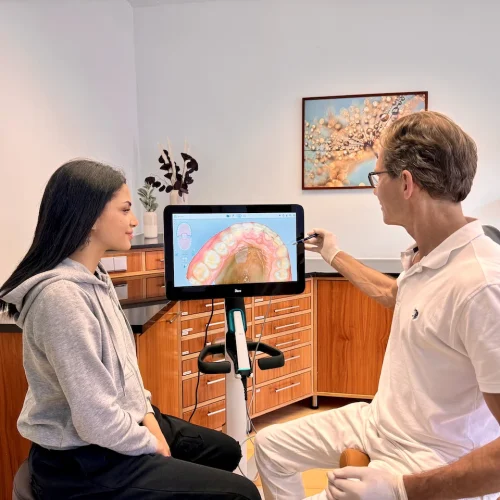Understanding the Need for E-Prescription Apps
In the rapidly evolving landscape of healthcare, technology plays a pivotal role in enhancing patient care. Among the many advancements, apps for electronic prescriptions have emerged as an essential tool for medical professionals. These applications streamline the prescription process, making it easier, faster, and more efficient for both providers and patients.
What are Apps for Electronic Prescriptions?
E-prescription apps are mobile or desktop software designed to enable healthcare professionals to write and send prescriptions electronically rather than using traditional paper methods. These apps facilitate the transmission of prescription information directly to pharmacies, thus improving the accuracy and safety of medication dispensing. By leveraging technology, e-prescribing can effectively reduce errors associated with handwritten scripts and enhance the overall efficiency of the healthcare system.
Key Features and Benefits
The features of e-prescribing apps can vary significantly between platforms, but several key functionalities are commonly recognized as essential:
- Streamlined Prescription Management: E-prescribing apps allow providers to quickly create, modify, and send prescriptions with minimal effort.
- Medication History Access: Many applications provide healthcare professionals with access to patients’ medication histories, enabling informed prescribing decisions.
- Automated Refills: E-prescribing apps can automate the refill process, saving time for both providers and patients.
- Error Reduction: By eliminating handwriting and manual entry, these apps significantly reduce the risk of errors.
- Regulatory Compliance: Most e-prescribing solutions are designed to comply with federal regulations regarding controlled substances, ensuring legal prescribing practices.
Challenges in Traditional Prescribing Methods
Despite advances in healthcare, traditional prescribing methods remain fraught with challenges. Issues such as illegible handwriting, lost or misplaced prescriptions, and miscommunications between prescribers and pharmacies can lead to serious complications. These challenges not only affect patient safety but also contribute to increased healthcare costs and reduced trust in medical systems. By adopting e-prescribing practices through innovative apps, healthcare providers can mitigate these risks and offer a more reliable service.
Top Features of Apps for Electronic Prescriptions
User-Friendly Interface
A key characteristic of effective e-prescribing apps is their user-friendly interface. Healthcare providers are often pressed for time, so it is crucial that these applications are easy to navigate and require minimal training. Intuitive designs that prioritize usability help ensure that providers can quickly become proficient with the app, allowing them to focus more on patient care rather than technology challenges.
Integration with Pharmacy Systems
A seamless experience for prescribers is largely dependent on how well the e-prescribing app integrates with pharmacy systems. Compatibility with various pharmacy platforms allows prescribers to send prescriptions directly to patients’ preferred pharmacies, leading to quicker service and enhanced patient satisfaction. This interoperability fosters a collaborative environment between healthcare providers and pharmacies, making the prescribing process more efficient.
Real-Time Medication Updates
Real-time medication updates are essential features in many e-prescribing applications. These updates provide healthcare professionals with crucial information related to drug interactions, allergies, and formularies, enabling them to make more informed prescribing decisions. Having access to up-to-date medication data can drastically improve patient outcomes and ensure safe prescribing practices.
Choosing the Right App for Your Practice
Evaluating Key Functionalities
When selecting an e-prescribing app, it is important to assess its functionalities against your specific needs. Consider aspects such as ease of use, available features, and how well the app aligns with your practice’s workflow. For example, an app that enables integrated telehealth services may be beneficial for practices focusing on remote healthcare.
Assessing Compliance and Security Standards
Regulatory compliance and data security are critical factors when choosing e-prescribing software. Ensure the application adheres to the Health Insurance Portability and Accountability Act (HIPAA) and other relevant regulations. Security features, such as data encryption and two-factor authentication, should also be evaluated to protect sensitive patient information.
Comparing User Reviews and Ratings
User reviews and ratings can provide valuable insights into the effectiveness and reliability of e-prescribing apps. By comparing feedback from other professionals who share similar practice contexts, you can gain a better understanding of what to expect. Look for common themes in both positive and negative reviews, which can help guide your final decision.
Implementing Apps for Electronic Prescriptions
Best Practices for Seamless Integration
Successfully implementing e-prescribing apps into your practice requires a thoughtful approach. Start by involving your team early in the process — provide them with information about the benefits of e-prescribing and gather their input on the selection of the app. This collaborative approach fosters buy-in and encourages smoother adoption.
Additionally, ensure that technical support for integrating the app with existing systems is in place. Proper setup can prevent disruptions during the transition and allow staff to hit the ground running.
Training Staff on New Technology
Training is crucial for effective implementation. Organize training sessions to familiarize staff with the new app and its functionalities. Consider ongoing educational resources, such as video tutorials or user guides, to support continual learning. Providing direct access to support personnel will also ensure quick resolution of any issues that arise during the onboarding phase.
Monitoring User Engagement and Feedback
Once the app is implemented, monitoring its usage and gathering feedback from users is vital for identifying areas of improvement. Use surveys or informal check-ins to collect insights on challenges faced and features that users find beneficial. Addressing and acting on this feedback not only improves user satisfaction but can also enhance the overall effectiveness of the e-prescribing process within your practice.
Future Trends in Electronic Prescription Technology
Advancements in Mobile Health Technologies
The future of e-prescribing is closely tied to the advancement of mobile health technologies. With the proliferation of smartphone use, the ability to prescribe medications through mobile apps is only set to grow. Future updates may include more sophisticated AI algorithms to assist with drug interactions, dosage calculations, and personalized medicine. As mobile technologies evolve, so will the potential for e-prescribing apps to enhance patient outcomes further.
Potential Impacts on Patient Care
As e-prescribing becomes more integrated into healthcare workflows, its potential to positively impact patient care expands. Improved accuracy in prescriptions, along with streamlined communication between providers and pharmacies, can lead to quicker access to medications for patients, ultimately enhancing treatment adherence and outcomes. Additionally, with the convenience of apps, patients may experience less frustration during the medication fulfillment process.
Emerging Regulations and Compliance Requirements
The landscape of healthcare is dynamic, with ongoing changes in regulations related to e-prescribing. Staying informed about upcoming legislative requirements is crucial for healthcare providers. New compliance mandates surrounding data security, patient privacy, and controlled substances prescribing are likely to evolve. Being proactive in understanding and adapting to these changes will fortify your practice against legal challenges and better serve your patients.




